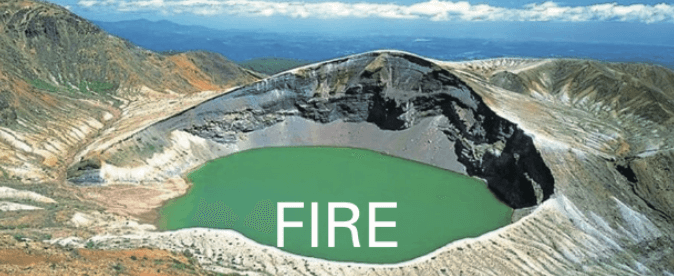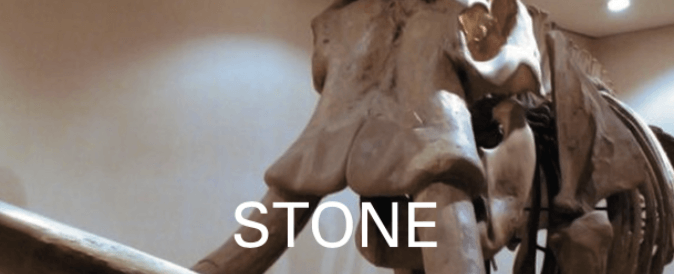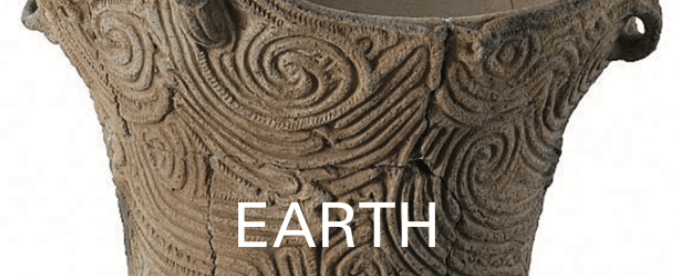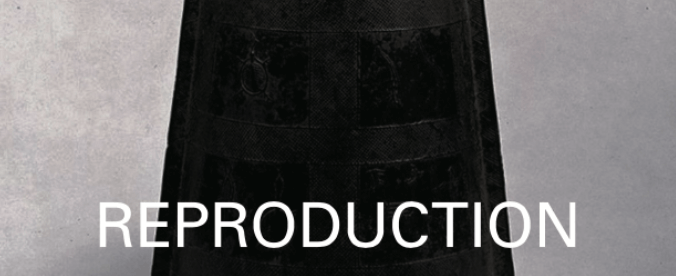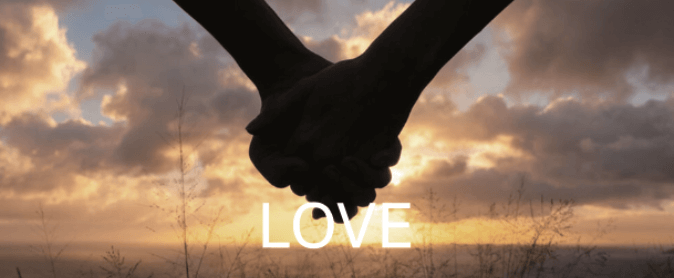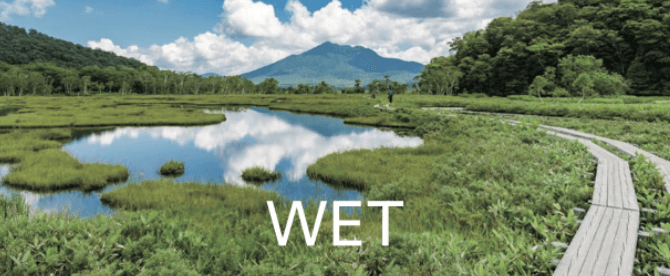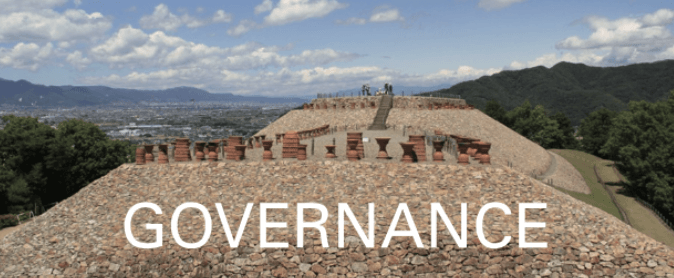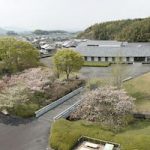
This museum focuses on the excavation research by Nara National Research Institute for Cultural Properties. It exhibits a number of important cultural properties, including Shumisenseki, stone objects for garden fountains, stone carvings from the Ishigami ruins, and mirrors from the Takamatsuzuka ancient mound.
You must see the buried articles of the tower of Asuka-dera, the oldest temple in Japan, and the east corridor of Yamada-dera, which was discovered as it was collapsed.
And this museum holds the Kitora tomb exhibition, featuring wall paintings of four Gods. The 7th-8th Century Kitora Tombs are less influenced by the Tang Dynasty culture of China. It is estimated that the construction was made before the Japanese envoy to the Tang Dynasty returned home.
The stone chamber was lacquered, and the ceiling has a celestial map. Inner walls were adorned with colored paintings. On the south wall, the Suzaku, the Vermilion Bird that ruled over the southern heavens, expresses a three-dimensional effect, by the technique of shading, gradation, and color.
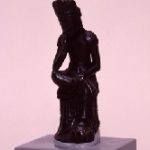
The Ibogawa River originates in the Chugoku Mountains, which has a lot of iron sand, produced since ancient times, that pours into the Harima-nada Sea. This museum introduces the history along the Ibo River, in the Stone Age, in the Jomon period (16,000 years ago – 3,000 years ago), in the Yayoi period (the 4th BC – 3rd century) and in the Tumulus period (the 3rd– 7th century) via excavated relics.
This statue with 11cm Height Asuka-era gold bronze Buddha, preserved from Tatsuno town’s Enkakuji temple is a gilt bronze statue of the Buddha in the Asuka period (550 -710). It is also known as the statue of Maitreya Bodhisattva, which is a bronze casting, with gilding of the a mid-7th century statue. It shows the path of civilization from the Chinese continent and Korean peninsula.
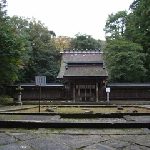
Wakasa Obama is a place that has thrived with culture and technology from overseas since ancient times. The Wakasa Ichinomiya, Wakasa Fukui’s most important provincial shrine, Wakasahiko jinja shrine consists of Wakasahiko Shrine, which enshrines Hikohodemi no mikoto, Yamasachihiko, and Wakasahime shrine, which enshrines Toyotama-hime.
In 714, it is said that those two gods descended to Shiraishi, the clear stream land of the Onyugawa River, Unose. It is famous in Japanese mythology as “Umisachihiko and Yamasachihiko”.
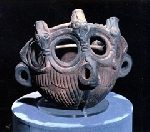
The museum introduces the history of the Suwa faith, such as the Onbashira Festival, huge pillars of fir tree are rollled, and Omiwatari, a phenomenon on Lake Suwa where ice cracks in large sections, called “the path of God crossing,” for the visiting legendary Goddess who crosses the lake. A number of materials, including treasures from Nagano Prefecture, and videos, are featured.
The Jomon pottery from the middle of the the Jomon period (16,000 years ago – 3,000 years ago), was excavated at Anaba site and is generally called Tsurite ware, Earthenware with a shallow bowl shape and a handle attached to the rim of the body. It is also considered to be a tool with a light like a lamp.
The upper half of the pottery has five animal patterns, which are thought to be snakes. It is a valuable resource for considering the faith and life of those days.

It is the largest wasabi (Japanese horseradish) garden in Japan, using the abundant spring water of Azumino Nagaono prefecture. Spring water is drawn to the wasabi field boasting an area of 3 Tokyo Domes (about 5ha x 3). The quantity of spring water is 120 thousand tons per day and the water temperature is 12 ° C. throughout the year.
Approximately 1.2 million people visit this each. Gishiki Hachmen the Great King who used to dominate this place along the Saigawa River in ancient times, fought the Imperial court.
The Great King Shrine was reconstructed and is located in the center of the farm.
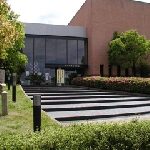
This museum exhibits Haniwa (clay images), and others at the end of the 4th century, excavated at Nobono Outsuka Tumulus, which is said to be the tombs of Yamato Takeru, a prince of Emperor Keiko, a hero in ancient Japan. It is said that he was exhausted, upon returning to the ancient capital Yamato Nara. After conquering the eastern area in Japan, he passed away at the Suzuka Pass and returned to Yamato as an incarnatied Swan.
The exhibited Haniwa are Morning-glory type cylindrical Haniwa (clay images) with fins. Their were numerous excavations of this style Haniwa in Yamato. This Haniwa indicates that the buried person of this tumulus had a strong connection with the Yamato administration (the Asuka period 592 – 710).
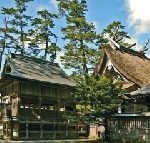
In Oki, floating on the northeastern sea of the Shimane Peninsula, a unique traditional culture has grown up, which merged the elegant aristocratic cultures of many exiles from the capital Kyoto with the various cultures carried by Kitamae-bune, cargo ships that sailed the Japanese Sea during the Edo period (1603-1868).
The architecture of this main shrine is also very unique. It is called Oki Zukuri style. A Kohai, an eave built over the steps of the worship and the main shrine connects the two. This style might have been the archetype for the ancient Inori, the prayer for harvest.
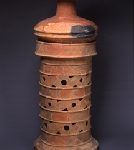
“Honoring Stone and Iron implements for cultivation” -At the Hyakukengawa sites in Okayama city, this complex contains settlements from the later Jomon period, 4,000 years ago, and the settlement from the early ‒ later Yayoi period, 4th Century BC – 3rd Century. Circular moats and Stone implements from the early Yayoi periods and Iron ones from the later Yayoi were found.
This center exhibits some of the items excavated from the Hyakukengawa sites. Rice existed in the Jomon period (16,000 years ago – 3,000 years ago) and there were paddy fields in its late period. In the Yayoi period (the 4th BC – 3rd century), ridges for adjusting the details of the plot were made to improve the efficiency.
And tools were improved, productivity was increased, and circular moat settlements were established, leading to the development of a large-scale base village. Eventually, a large-scale mound tomb was built and exchanges with various places became popular.
This center guides well the flow of ancient Japanese civilization.

In the Kaifu River basin, Tokushima Prefecture, there is a megalithic tomb, Osato Burial Mound, which had the horizontal stone chamber and was built in the 6th century. The chamber was designed for the grave of Local King and faces the south.
This museum exhibits a diorama that has restored the original shape of the chamber. The thought continuing from ancient Japan, that the soul returns from Yomi, Hades, is clearly explained.
The Kaifu marine force is introduced by the sword of Kaifu, Awa Province, which was the descendent of Local Kings in ancient times.
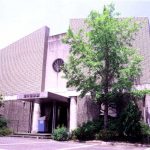
Dotaku, Bronze bells allegedly excavated in Kagawa Prefecture is possessed by Tokyo National Museum. They are of a similar mold as those excavated in Fukuoka. That indicates that Dotaku was transported from Kyushu Island to Shikoku Island. Comma-shaped copperware excavated in Morihiro Ruins, Sanuki City, from the Yayoi period (the 4th BC – 3rd century), was made from the same mold as the ones in Fukuoka, which were recently found in the Tokai region, too.
Comma-shaped copperware was used as amulets against temptations and enemies, of which the shape resembles a spider conch. Spider conch was believed to have the power against temptations in the Satuna islands, Kagoshima, and the Ryukyu Islands, Okinawa. Comma-shaped copperware, and Spider conch, shows the sea route from Ryukyu Islands, to the Tokai region of Honshuu Island.
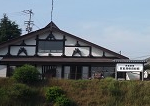
This museum exhibits cylindrical clay figures in the Tumulus period (the 3rd– 7th century), and part of a replica of a Comma-shaped copperware excavated from Morihiro Tenjin Ruins, Sanuki City, in the Yayoi period (the 4th BC – 3rd century). The shape resembles a spider conch, believed to have the power against temptations in the Satuna islands, Kagoshima, and the Ryukyu Islands, Okinawa.
This museum introduces the local history through these exhibits, that the culture from abroad from the sea route took root in this area, enhanced its economic power, and the power increased to be able to build a tumulus overlooking Seto Inland Sea.

This tomb is the largest keyhole tomb in Shikoku Island, which was built in the first half of the 5th century, and symbolizes a tomb in Shikoku Island. Fukiishi, stones covering the slope of this tomb, used a lot of basalt and Kuro Aburaishi, black shining stone, from Sanuki, Kagawa. Comma-shaped copperware, from the the Yayoi period (the 4th BC – 3rd century) was excavated from this area and carried by the sea route.
This local history tells us that the culture from abroad took root in this area, enhanced its economic power, and the power increased to enable the development of a large civil engineering and construction industry, on the plateau overlooking the agriculture field.
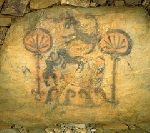
This Ancient Burial Mound is a mural tomb from the later part of the 6th century. Although many decorative tombs are abstract paintings, these murals feature concrete paintings. Takamatsuzuka Tumulus in Asuka Nara, which is famous as a concrete decorated Tomb, was built at the end of the 7th century.
The subject of these murals are presumed as Suzaku (red Chinese phoenix) and Genbu,(black tortoise), and they are the same as ones in Koguryo Tombs in the Korean peninsula.
Along with the Takamatsuzuka Tumulus, there is no other example of a Japanese decorated tomb. Burial accessories, like jewel balls, glass balls, gold rings, harnesses and arms have been excavated.
